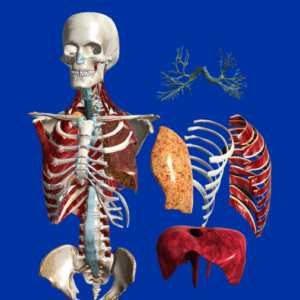The Challenges of Cadaver Use in Medical Training: Embracing Virtual Anatomy
Explore the challenges of cadaver use and the virtual anatomy advantages
The quest for knowledge about the human body has historically relied on the use of cadavers. However, in today’s world, several challenges hinder the widespread use of donated bodies for medical research and training. From religious beliefs to financial constraints, the traditional approach faces numerous obstacles. Enter the realm of virtual anatomy, a promising alternative that addresses these challenges head-on.
The Sacred and the Prohibited:
Religious customs and beliefs play a significant role in shaping our attitudes towards cadavers. For instance:
The Navajo Perspective: The Navajo believe that upon death, the benevolent part of a person departs with the spirit, leaving the malevolent aspect with the physical remains. Touching the deceased body might risk the spirit’s return, causing harm to the living.
The Muslim Viewpoint: In Islam, the human body is considered sacred, and its dissection can be seen as desecration. Furthermore, Islamic customs emphasize swift burial post-death, leaving no room for anatomical studies.

The Financial Burden:
While the act of selling bodies is prohibited by law, the costs associated with processing and transporting cadavers are substantial. Schools might incur expenses ranging from $1,000 to $2,500 per body. For many institutions, especially in economically challenged regions, these costs can be prohibitive.

Diverse Uses, Limited Supply:
Cadavers serve multiple purposes beyond medical training. They aid in organ donations, police dog training, car crash tests, and even plastination for exhibits. This multifaceted demand, coupled with the general preference for traditional burial or cremation, results in a scarcity of available bodies for academic purposes.
The Promise of Virtual Anatomy with VIVED Anatomy
Addressing these challenges is VIVED Anatomy with its innovative anatomy Learning Packages. The advantages are manifold:
Inclusivity: Virtual dissection platforms respect diverse cultural and religious beliefs, allowing everyone to engage without reservations.
Reusability: Unlike cadavers, which are single-use, virtual models can be dissected and reassembled multiple times, enhancing the learning experience.
Accessibility: Virtual anatomy eliminates the waiting period associated with cadaver availability, ensuring uninterrupted learning.
Reduced Stress: With easy-to-absorb information and interactive features, virtual anatomy can potentially alleviate the academic pressures that contribute to student dropouts.

In Summary: Virtual Anatomy Advantages
The shift from traditional cadaver-based learning to virtual anatomy is not just a technological advancement; it’s a response to the evolving needs of the medical community. By embracing virtual tools, we ensure that the pursuit of medical knowledge remains unhindered, inclusive, and forward-looking.
At VIVED Learning, we empower students and teachers with innovative, interactive STEM resources. Our platform contains over 1000+ fully dissectible 3D models, across STEM subjects such as Anatomy, Chemistry, Engineering, Biology and more.
Book a call with our expert team today to learn how VIVED can boost your students engagement and learning outcomes!
Like this blog? Check out our blogs on the best STEAM learning resources and study apps!


